How to Roast a Perfect Thanksgiving Turkey
Thanksgiving brings families together, and the turkey takes center stage on the dinner table. A perfectly roasted turkey, golden brown on the outside and juicy on the inside, can make your holiday meal truly memorable. Let’s walk through how to roast a turkey that will impress everyone at your Thanksgiving feast!
🦃 1. Picking the Right Turkey
Selecting the right turkey is key to a successful meal. Here’s what to consider:
- Fresh vs. Frozen: While fresh turkeys tend to be more flavorful and tender, they need to be purchased closer to the holiday. Frozen turkeys are available in advance and can be a more convenient choice, but they require proper thawing time.
- Turkey Size: A general guideline is to plan for 1 to 1.5 pounds of turkey per person. For example, a 12-pound bird is perfect for about 8 guests. If you’re expecting a larger crowd or want plenty of leftovers, opt for a bigger bird.
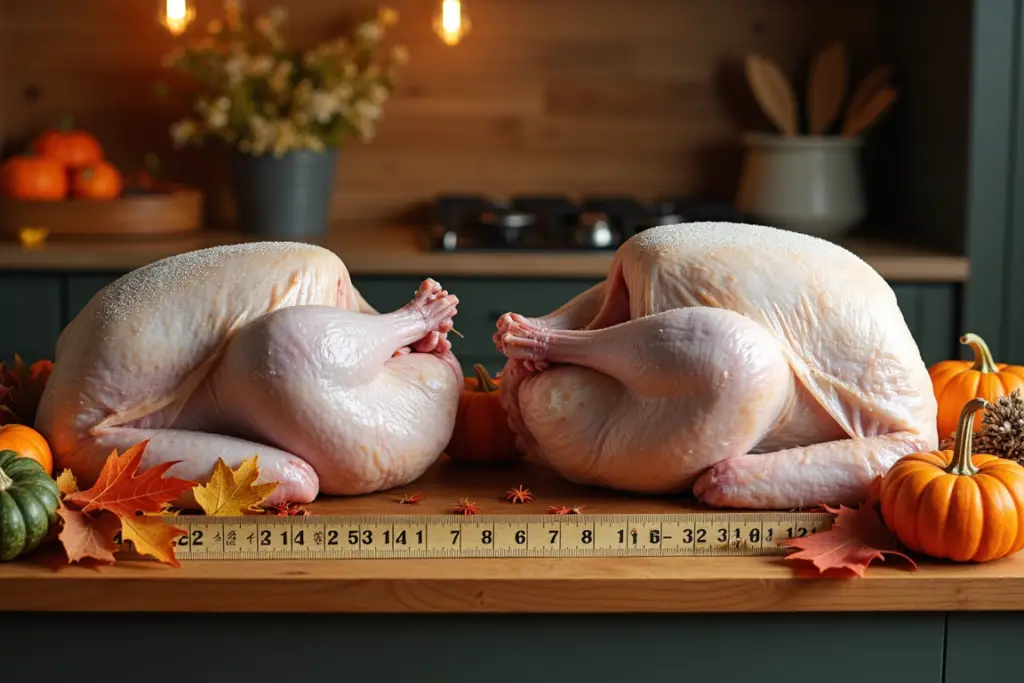
❄️ 2. Thawing Your Frozen Turkey
Thawing is crucial if you’re working with a frozen turkey. You have two main options:
- Refrigerator Thawing: This method is slow but safe. Place the turkey in the fridge, in a tray or dish to catch any liquids. Allow 24 hours of thawing time for every 4-5 pounds. A 12-pound bird will take about 3 days to thaw fully.
- Quick Thawing with Cold Water: If you’re short on time, place the turkey (still in its packaging) in cold water, making sure the bird is fully submerged. Change the water every 30 minutes. It will take about 30 minutes per pound to thaw.
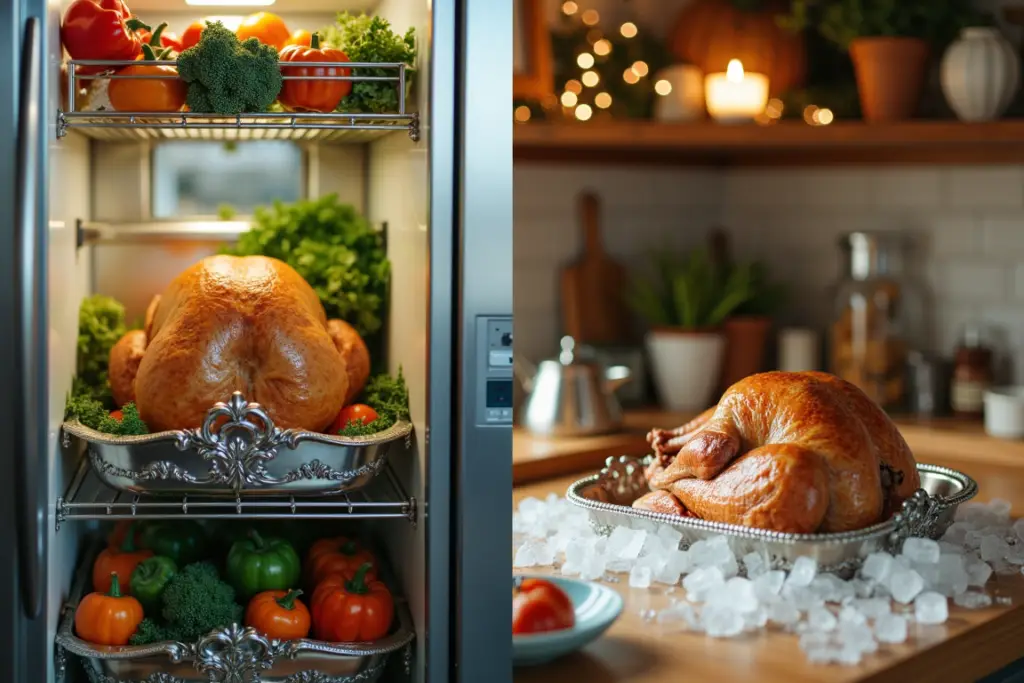
🧂 3. Preparing and Seasoning Your Turkey
Once thawed, it’s time to prep your bird for roasting. Begin by removing the giblets and neck from the turkey’s cavity. Pat the turkey dry with paper towels to ensure the skin crisps up during cooking.
Essential Seasoning Ingredients:
| Ingredient | Amount |
|---|---|
| Butter 🧈 | 1/2 cup, softened |
| Salt 🧂 | 1-2 tsp |
| Black Pepper | 1 tsp |
| Fresh Herbs 🌿 | 1-2 sprigs each (rosemary, thyme, sage) |
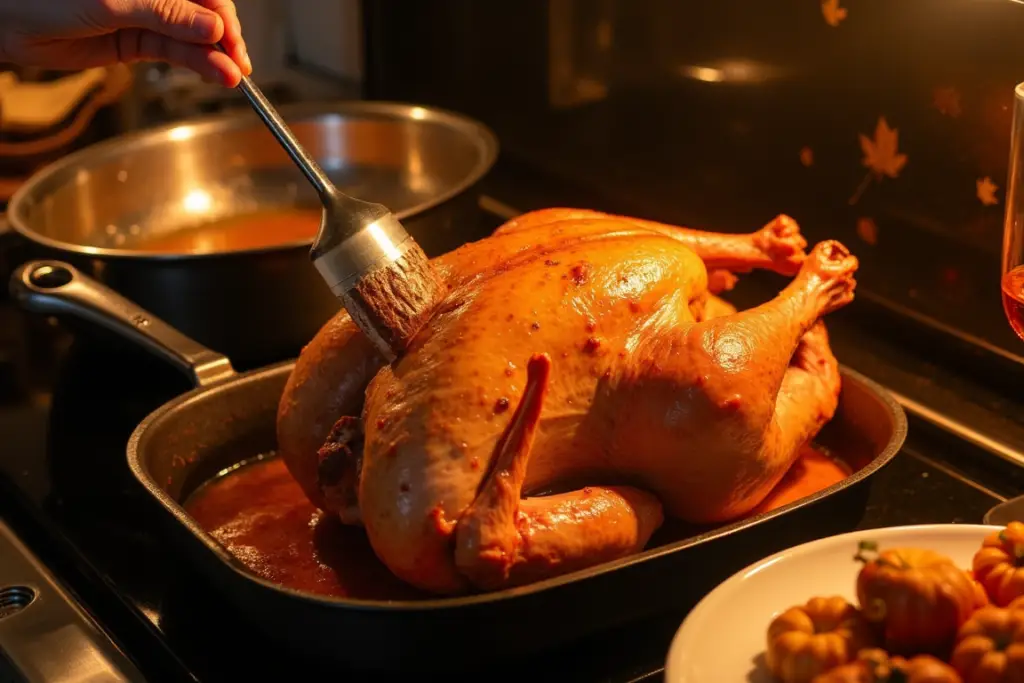
- Butter the Turkey: Massage softened butter under the skin and all over the surface of the turkey. Butter helps the skin crisp up and adds a rich flavor to the meat.
- Season Well: Generously sprinkle salt and pepper inside and outside the bird, including under the skin and in the cavity.
- Add Fresh Herbs: Tuck sprigs of rosemary, thyme, and sage under the skin and inside the cavity. The herbs will infuse the turkey with a fragrant, earthy aroma.
🔥 4. Roasting the Turkey
Preheat your oven to 350°F (175°C). Place the turkey breast-side up on a roasting rack set in a roasting pan. The rack lifts the turkey, allowing hot air to circulate for even cooking.
Roasting Tips:
- Loosely Tent with Foil: For the first hour, loosely cover the turkey with aluminum foil to prevent over-browning. This helps keep moisture in, ensuring the turkey stays juicy.
- Baste Every Hour: Use the pan juices to baste the turkey. This adds flavor and keeps the skin golden.
Roasting Time:
As a rule of thumb, roast the turkey for about 15 minutes per pound. For example, a 12-pound turkey will take around 3 hours to cook. To check if it’s done, insert a meat thermometer into the thickest part of the thigh, avoiding the bone. The turkey is ready when it reaches 165°F (74°C).
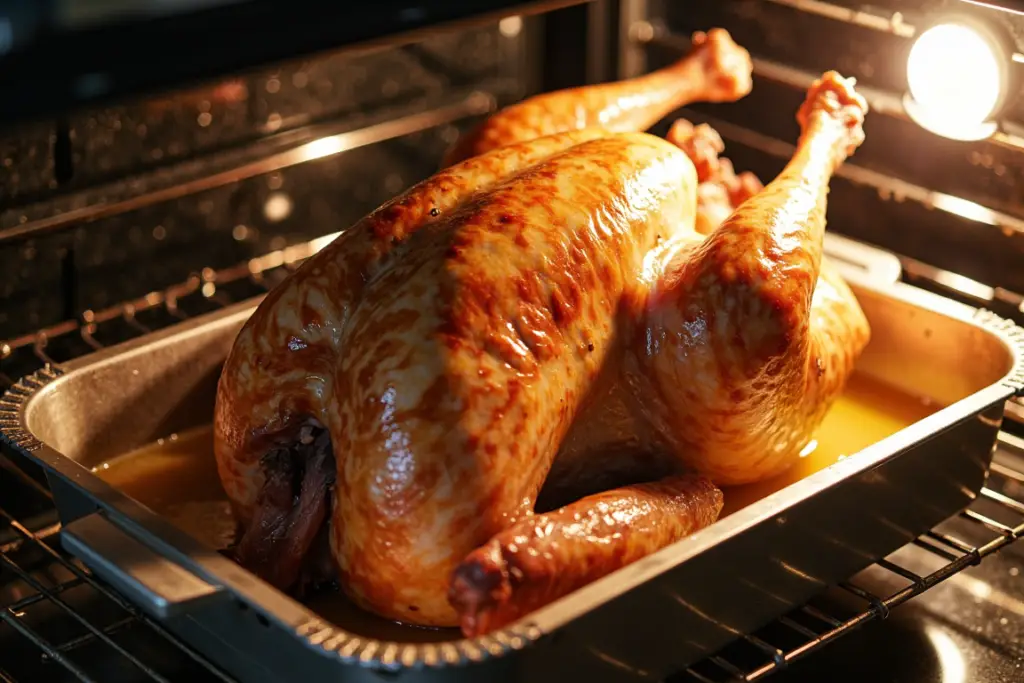
🕰️ 5. Resting and Carving the Turkey
Once roasted, remove the turkey from the oven and let it rest for 20-30 minutes before carving. Resting allows the juices to redistribute, making the meat more moist and flavorful.
Carving Tips:
- Remove the Legs: Cut through the skin between the leg and the body. Gently pull the leg away and cut through the joint.
- Slice the Breast: Find the breastbone, then slice down on either side, making thin slices.
- Present the Turkey: Arrange the carved turkey on a large platter for an eye-catching display.
🍽️ 6. Serving Ideas
- Add Garnishes: Fresh herbs, cranberry sauce, or slices of orange make for a colorful, festive touch on the serving platter.
- Side Dish Pairings: Serve your turkey with classic Thanksgiving sides like mashed potatoes, stuffing, gravy, and roasted vegetables for a delicious, complete meal.
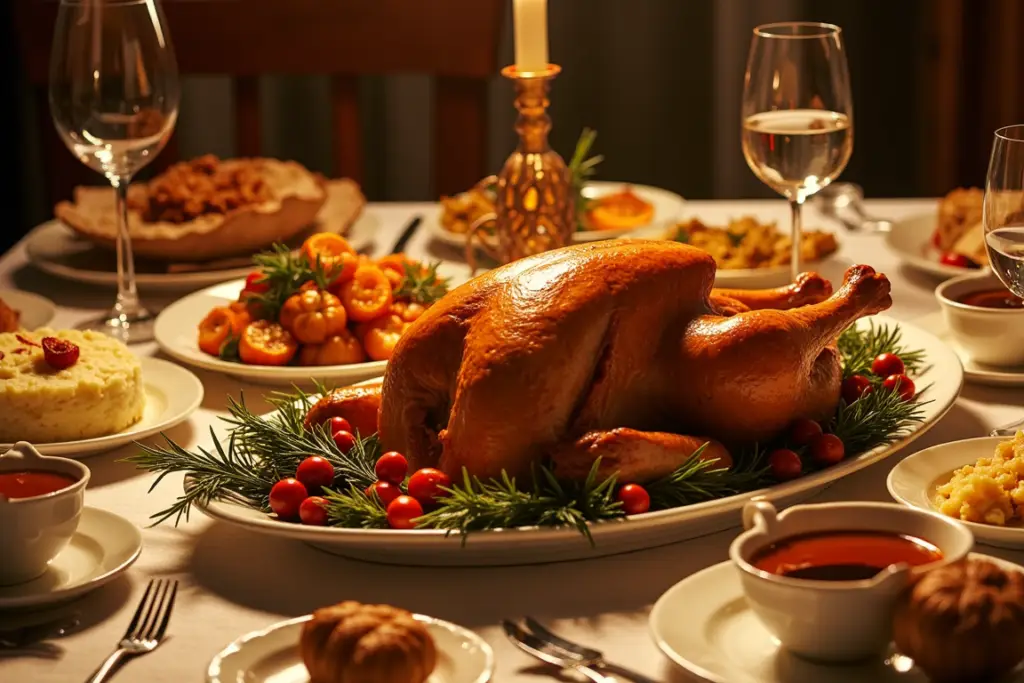
🌡️ 7. Storing Leftovers
After your meal, carve off any remaining turkey meat and store it in airtight containers. Be sure to refrigerate leftovers within two hours of cooking. Leftovers can also be frozen for up to three months for future meals.
Troubleshooting Tips
Sometimes, even with careful preparation, things don’t go as planned. Here’s how to fix common turkey issues:
- Dry Meat: If the breast meat is dry, slice it and serve with plenty of gravy for added moisture.
- Undercooked Sections: If any part of the turkey is undercooked, simply slice off the cooked parts and return the rest to the oven until fully cooked.
- Burnt Skin: If the skin is overly browned, cover it with foil and continue roasting until the turkey reaches the desired internal temperature.
Frequently Asked Questions
Q: Should I stuff the turkey?
A: Stuffing the turkey can add flavor, but it may increase cooking time and make it more challenging to cook the turkey thoroughly. For safety and convenience, consider baking the stuffing separately.
Q: What if I don’t have a roasting rack?
A: You can create a simple rack by arranging vegetables, like carrots or celery, at the bottom of the pan. This elevates the turkey, allowing air to circulate and ensuring even cooking.
Q: Can I brine my turkey?
A: Yes! Brining adds flavor and moisture. Soak your turkey in a saltwater solution (about 1 cup of salt per gallon of water) for 12-24 hours before cooking. Rinse and dry it before seasoning.
Final Thoughts
Roasting a turkey is an achievable task, and with the right preparation, your turkey can come out golden, juicy, and full of flavor. Use this step-by-step guide to create the perfect centerpiece for your Thanksgiving feast. Enjoy the process and the company of your loved ones!
Happy Thanksgiving! 🦃🍂🍽️


1 thought on “How to Roast a Perfect Thanksgiving Turkey🦃: 7 Simple Steps for a Juicy, Flavorful Feast”